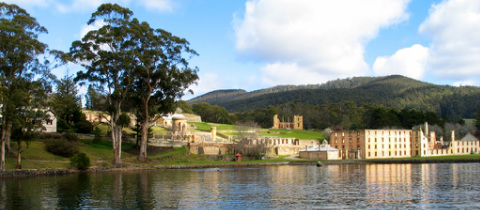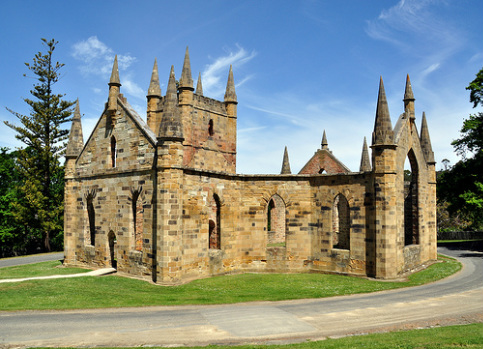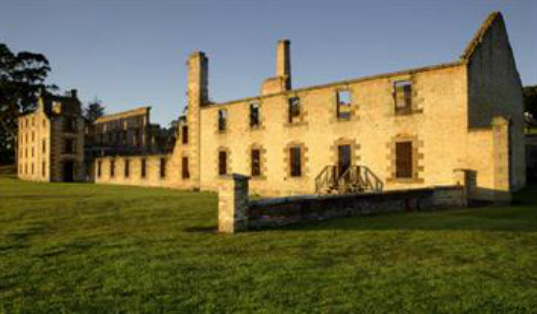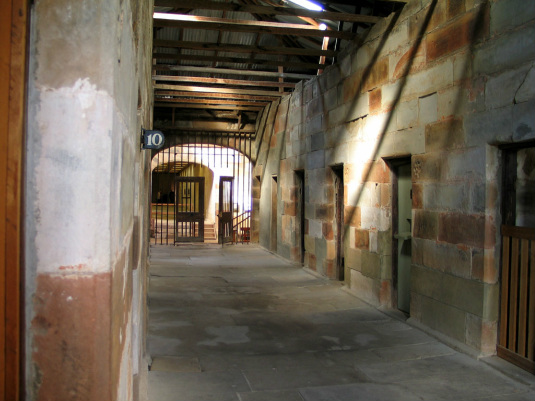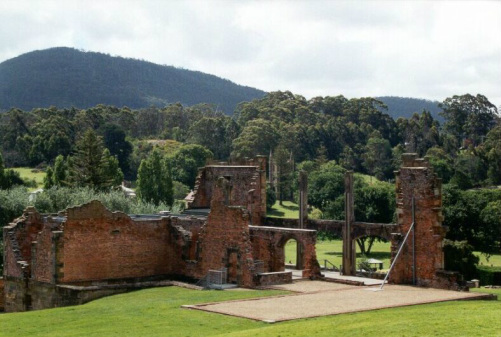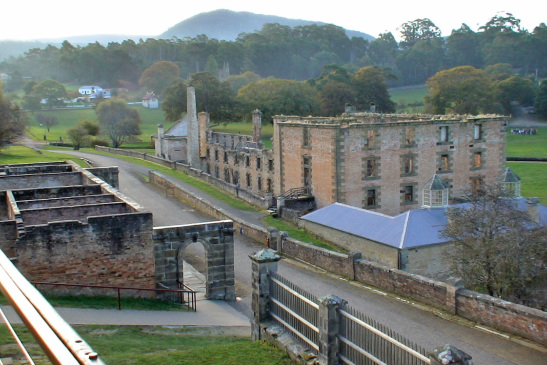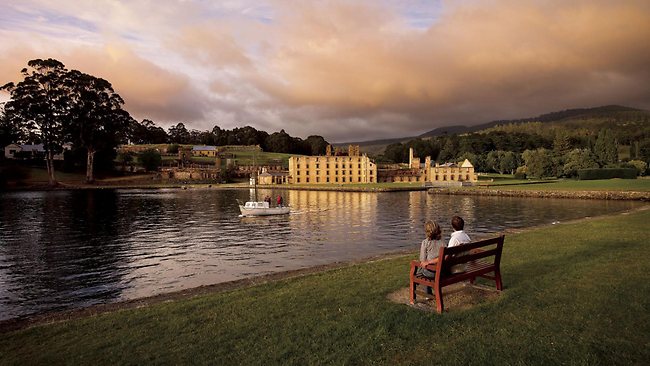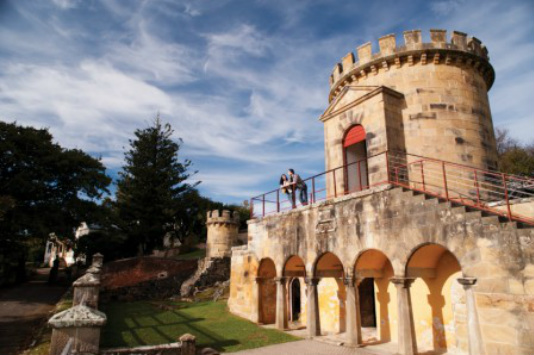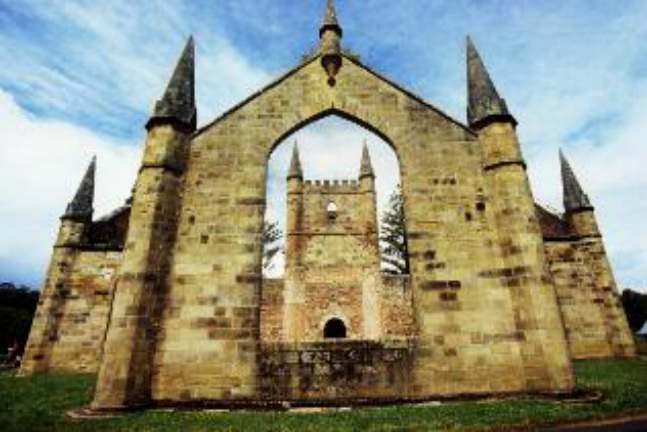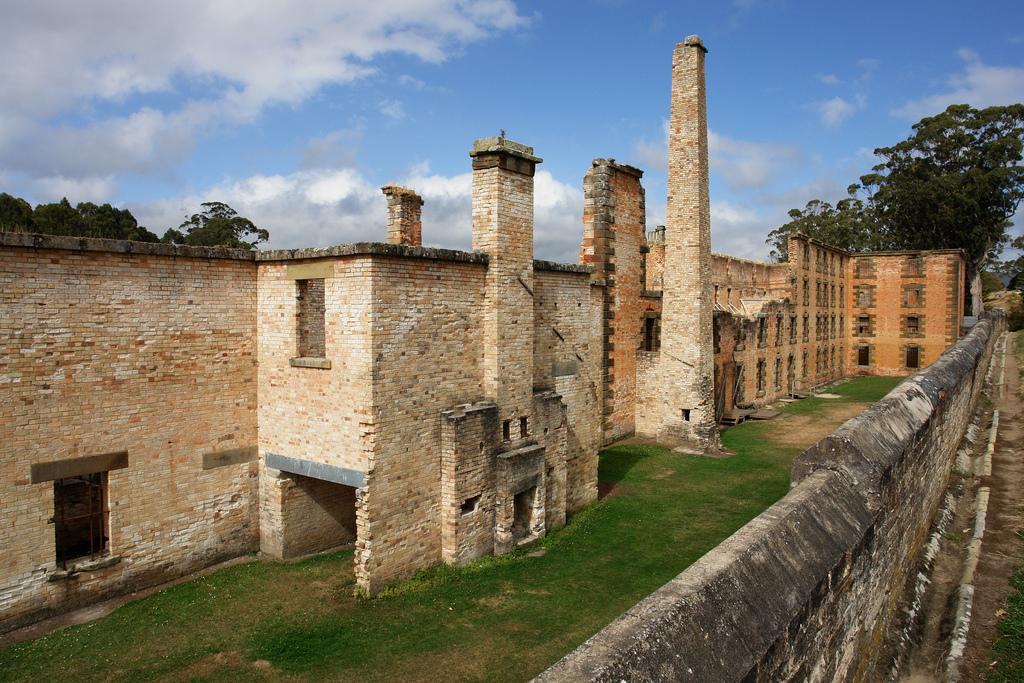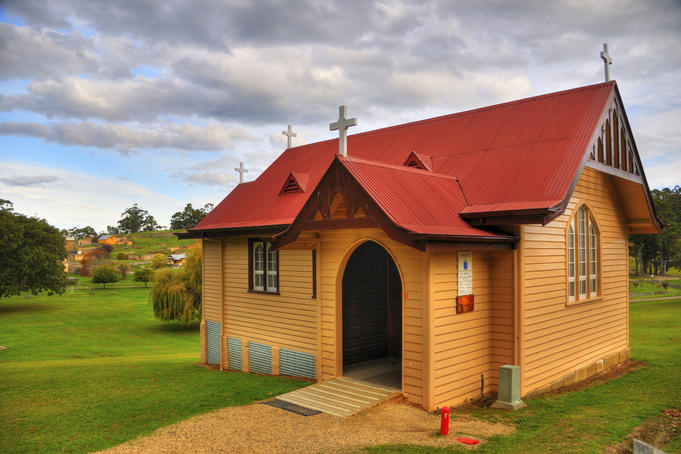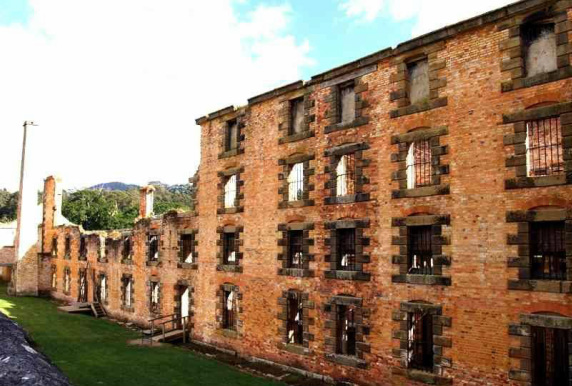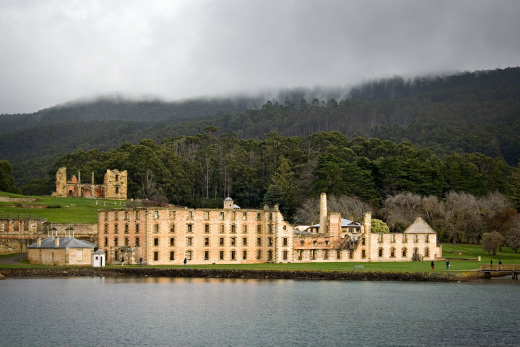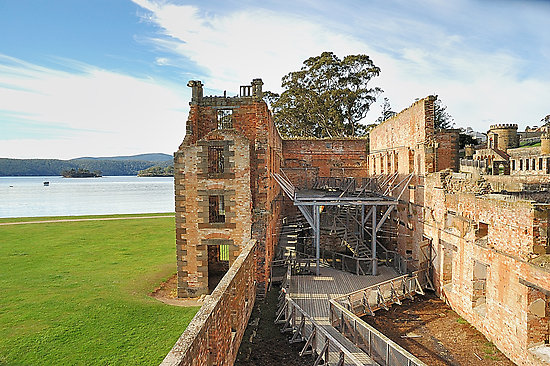Port Arthur (Prison for British convicts in 1830s)
|
Port Arthur, Tasmania was once a home to over 12,500 convicts. It provided the severest form of punishment for difficult prisoners in England and Australia between 1830 and 1853.
In the South Eastern corner of Tasmania, on the Tasman Peninsula, resides the historic site of Port Arthur. Port Arthur is Australia's most significant convict heritage and holds a deep history for punishment for difficult prisoners. Van Diemen's Land (Tasmania as it is known today) became home to approximately half the convicts shipped from England to Australia. England, the mother country of Australia, decided to use Tasmania as a place to gaol the more difficult prisoners kept captive in England. The gaols in England were over populated and were taking up too much of its countries resources. Due to England's poor economy and its high unemployment rate, the amount of crime was increasing. England wanted to make a statement to the public that if you committed a crime you would be punished severely. Port Arthur's history began in 1830 when approximately 150 convicts were first transported to the peninsula to chop trees and to erect rough timber and bark huts that became the first form of buildings in the area. Initially, Port Arthur was intended to be just a timber sawing station where severe punishment would be carried out to its prisoners. When coal was discovered, and the value of the peninsula increased, chain gangs of convicts were set up to provide raw materials for the growing settlement. With rough seas surrounding the peninsula, there was only one other way convicts could escape; Eaglehawk Neck is a thin strip of land that joins the Tasman Peninsula onto the mainland of Australia. Here on Eaglehawk Neck savage dogs were patrolled to keep the convicts on the peninsula where they belonged. In winter Port Arthur is a wet, cold, and dismal place, with Arctic winds that cut through to your bones. Prisons were erected by the prisoners, each brick individually handmade, and provided enough accommodated for 1200 convicts at one time. Each cell contained enough room for a narrow bed and room to open the locked doors. If a prisoner was difficult then he would be put into solitary confinement. This could be up to 12 months at a time. The prisoner would have no contact with anyone, and on his 1 hour of daily exercise he was released from his cell with a hood over his head so he could have no eye contact with the prison officer. The prisoner would also have to wear padding on his feet so no noise could be made. In total 12,500 convicts passed through Port Arthur between 1830 and 1853. Those that died were buried on the Isle of the Dead where nearly 2,000 convicts and free people are buried. The free people included soldiers, officials and their families. Conditions for the convicts were extremely harsh, contrasting with the relatively easy lives of the officers and their families. Exploring the historic site of Port Arthur, it is hard to imagine that prisons in England were less favourable. With moss growing on the inside of the cells and only a thin blanket to use for warmth, many convicts managed to survive these harsh conditions and eventually became the main population of the state of Tasmania. |
